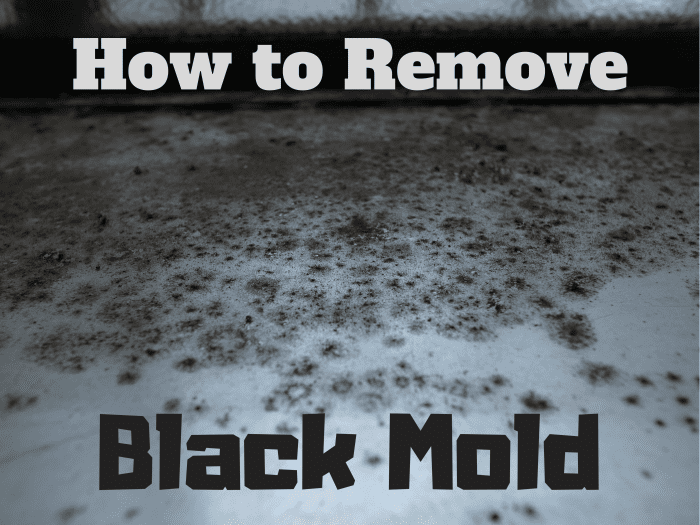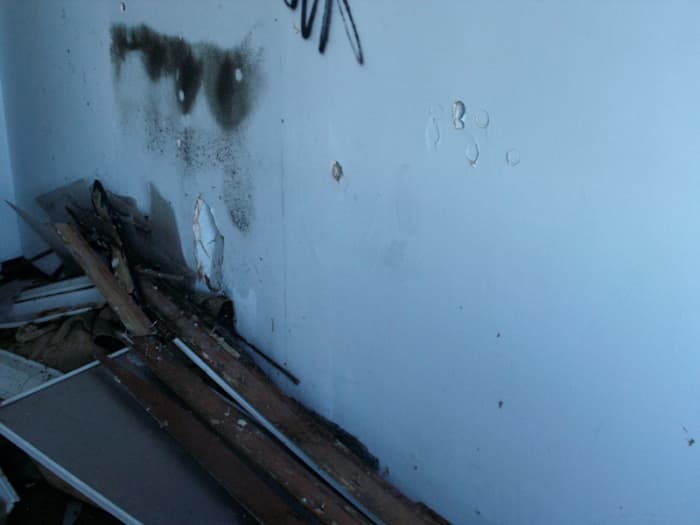How To Remove Mold Spots From Bathroom Ceiling
I enjoy educating others on how to combat mold in their home.

Though not all forms are toxic, it's still always a good idea to identify where your mold is deriving its water source, fixing this problem, and removing all traces of the fungus. This article will show you how.
Toshiyuki IMAI, CC-BY-SA 2.0, via Flickr
When most people talk about black mold removal, they are referring to what is called toxic black mold. The problem is, most household molds are black, but not all black molds are toxic. Mold also comes in the colors of dark green, white, orange, and red. A lot of it depends on what the fungus is consuming.
Before we talk about removal, let's review what causes mold in your home. Because, until you find and correct the problem in your home, you will continue to have mold even after you have removed it.
Mold Is Everywhere
There is realistically nothing you can do to stop mold spores from being in your home. They're everywhere. As soon as a door or window is opened, mold spores come in. As soon as you enter your house, mold spores that were on you are now in your home.
The reason it becomes a problem in your home is that the spores are now in a rather confined space, rather than the open air. If they are able to start growing and releasing more spores and mycotoxins, there is now a much higher density of these spores and mycotoxins in your house. This is where the potential for health hazards arises.
What Does Mold Need to Grow?
Mold needs three things to germinate from spores and grow:
- Food source
- Water source
- Ideal temperature
Food Source
Mold consumes just about anything organic and a few inorganic things as well, such as wallpaper paste and adhesives. But it mostly consumes organic items, including things like dust. No matter how clean you try to keep your home, there will be always still be some dust in it. So, other than keeping a relatively clean home, mold's food source is something that is very hard to control.
Water Source
This is the most controllable source. Water sources can be actual water leaks, condensation, and even humidity. Without water/moisture, mold cannot even start to germinate. Control the water and you control the mold.
Temperature
Different mold species need different temperatures, but most are within the comfort levels we choose for our homes. Because we don't want to be freezing all the time, this is what I consider an uncontrollable source.

Black mold on a wall.
Where Does Toxic Black Mold Grow?
What has been labeled as toxic black mold in our homes is a certain genera of the fungus known as Stachybotrys. There are other toxic black molds, but their food source is not something commonly found in houses, so we will concentrate on Stachybotrys.
Moisture + Paper = Mold
This fungus loves water-saturated paper to grow on. It is commonly found in places that have had flooding, fires, or pipe bursts. Paper items such as newspapers, books, magazines, and cardboard boxes are favorites. Remember, if drywall was used in your house, it is paper-backed gypsum. The key word there is "paper-backed." This means that if the drywall gets soaked and it keeps the paper soaked, toxic black mold can grow there as well.
But it doesn't necessarily take an extreme event (like flooding) for Stachybotrys to germinate and flourish. In many homes, people use cardboard boxes to hold items of interest and store them on concrete floors in the basements. If the floor contains any type of moisture, mold can grow and flourish. And it doesn't have to be concrete floors, it can be up in attics and basically any room in your house—especially if you have very high humidity, like in the South.

All it takes for mold to grow is a little humidity, traces of organic material like dust, and a moderate room temperature.
satemkemet, CC-BY-SA 2.0, via Flickr
What Are the Symptoms Associated With Exposure to Toxic Black Mold?
Although there is not definitive scientific or medical proof that mold in homes causes certain health problems, there is enough circumstantial evidence to make people be cautious of it and be on the lookout for unexplained health problems. Symptoms of overexposure to toxic black mold are quite similar to the symptoms of numerous other health problems, which is why it is so hard to pinpoint mold as the actual trigger for the problems.
Allergy Mold Symptoms
Of course, there are the normal allergy mold symptoms, such as:
- runny nose
- congestion
- sinus infections
- coughing
- asthma
Other Toxic Black Mold Symptoms
But there are also many other toxic black mold symptoms, such as:
Read More From Dengarden
- acne
- bruising easily
- recurring colds
- depression
- anxiety
- dementia
- diarrhea
- nosebleeds
- numbness in limbs
- poor appetite
- swollen lymph nodes
- tremors
And that is just a partial list of symptoms that have been attributed to people's continued exposure to toxic black mold.
But if you see mold in your house, toxic or not, you always want to fix the problem and remove the fungus.
How Do You Remove Toxic Black Mold?
Don't freak out if you go down into your basement and see black mold growing on your cardboard boxes or on your walls! Remember, not all black mold is the toxic variety. Here's what you should do:
- Don't touch it or cause any disturbance to the fungus—that just triggers the release of more mold spores.
- Figure out how and where the mold is getting its water. Correct the problem, whether by your own hand or through a professional's. There is no need to remove the mold if you don't first correct the problem, however, as it will just grow right back.
Although the basics of how to get rid of the fungus is essentially the same for all types, you may want to take more extreme measures for containment of toxic black mold.
Always wear personal protective equipment (PPE) for any type of mold removal. These include N95 respirators, eye goggles, and rubber gloves. Furthermore, you should wear long pants, longsleeve shirts, and shoes, all of which should be washed immediately after.
Once you've set yourself up with the proper protective equipment, all you need to do is follow these steps:
Step 1: Contain the Area as Much as Possible
This means creating barriers to keep the airborne mold spores as contained as possible to avoid spreading them around your house.
Step 2: Fix and/or Correct the Water Source
You may need outside help to do this. It may be a humidity problem, a condensation problem, or a leaky or busted water pipe problem. Until the water problem is fixed, your mold will come back.
Step 3: Remove the Mold
You do not need to kill it first with bleaches—just remove it. Depending on the amount of mold and your sensitivity to it, you may also need to hire professionals for this part. The general rule of thumb is that homeowners can usually take care of up to 10 square feet of mold. Any more than that and you should probably get a professional.
Note: The mold you visibly see may not be the entirety of its growth. There may be hidden mold that turns a small job into a very big one.
This article is accurate and true to the best of the author's knowledge. Content is for informational or entertainment purposes only and does not substitute for personal counsel or professional advice in business, financial, legal, or technical matters.
Mold Removal on May 30, 2014:
Great addition to another mold removal how-to that I came across earlier. http://moldremovalexpert.blogspot.com
davesnell from 5437 Cedarmint Drive, Charlotte, N.C. 28227 on February 29, 2012:
Remarkable hubs. Very informative and presented in a very nice way.
Mary Parks on August 06, 2011:
The black mold that climbs up the seams of the shower, is that the toxic kind? I use bleach and it helps for a while but it comes back. What should I do.
How To Remove Mold Spots From Bathroom Ceiling
Source: https://dengarden.com/cleaning/What-You-Should-Know-About-Black-Mold-Removal

Posting Komentar